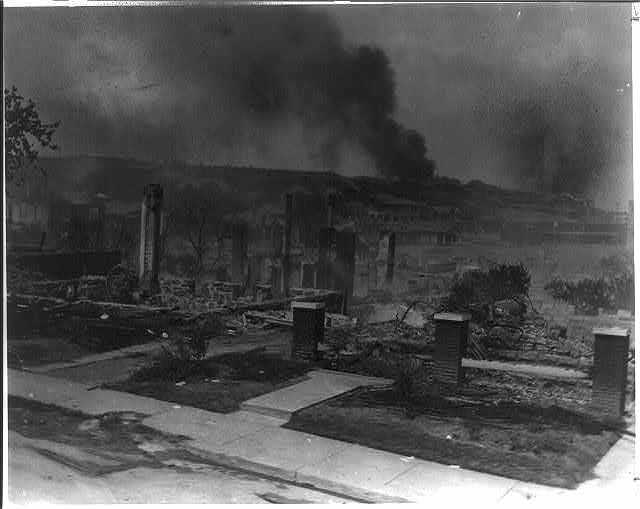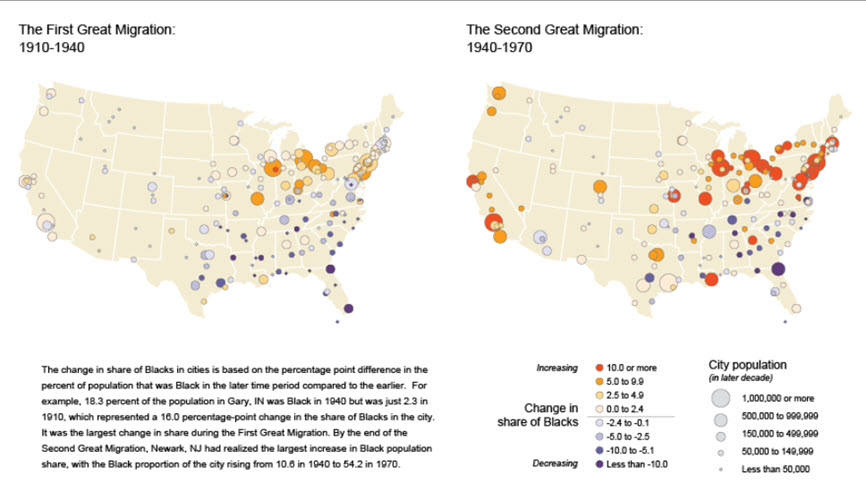IB Syllabus focus:
'The historical context of racism against African Americans.
Specific instances of violence, including activities by the Ku Klux Klan.
The psychological and societal impact of racism and violence on African American communities.'
Delving into the origins and repercussions of racism and its associated violence during this pivotal era offers a deeper appreciation of the Civil Rights Movement's motivations and challenges.
Historical Context of Racism against African Americans
Origins of Racial Prejudice: The enslavement of Africans and their transportation to the Americas in the 16th century sowed the initial seeds of racial prejudice. This dehumanisation was codified into laws and practices that would persist for centuries.
Reconstruction Era (1865-1877): Post the Civil War, this era aimed to rebuild the Southern states and reintegrate them into the Union. Initially, this period saw African Americans gain political rights and representation. However, with the end of military occupation, these advancements were rapidly reversed, leading to the rise of white supremacist groups and sentiments.
Jim Crow Laws (late 19th century to mid-20th century): Named after a derogatory term for African Americans, these laws enforced racial segregation in the Southern United States. Encompassing everything from separate schooling to segregated public facilities, they institutionalised the notion of African Americans as inferior.
Specific Instances of Violence
Lynchings: Extrajudicial killings carried out by mobs, these acts were particularly prevalent from the 1880s to 1960s. They were a brutal means of enforcing racial hierarchy.
Emmett Till (1955): A 14-year-old African American boy who was brutally murdered in Mississippi for allegedly whistling at a white woman. His death and the subsequent acquittal of his murderers galvanised the Civil Rights Movement.
Tulsa Race Massacre (1921): In Tulsa, Oklahoma, a thriving black community in Greenwood, dubbed "Black Wall Street", was razed. A confrontation in an elevator between a black man and a white woman led to racial tensions, culminating in violence. White mobs looted and burned the district, leading to the death of hundreds of African Americans and displacing thousands.

Photograph of smoldering ruins in Tulsa’s Greenwood District following the 1921 massacre, when white mobs looted and burned Black neighborhoods. The image conveys the scale of destruction and displacement inflicted on the community. Source
Activities by the Ku Klux Klan:
Formation and First Wave (1865-1870s): Originating as a social club in Tennessee, the Klan quickly evolved into a paramilitary group opposing the reconstruction era reforms. Their tactics included intimidation, violence, and even murder to suppress black political power.
Second Wave (1910s-1940s): Capitalising on the release of the film "The Birth of a Nation" in 1915, which portrayed the Klan as heroic, the organisation expanded its base and membership. Targeting not just African Americans, but also Jews, Catholics, and immigrants, it championed "100% Americanism" and infiltrated mainstream politics.
Third Wave (1960s-Present): Opposing the gains of the Civil Rights Movement, the Klan reverted to more overt acts of violence. Churches serving African American communities were bombed, activists were murdered, and intimidation was widespread.
Psychological and Societal Impact of Racism and Violence
Psychological Trauma: The relentless threat of violence had far-reaching psychological implications on the African American populace.
Fear and Vigilance: The fear of being targeted because of one's race, either by a white mob or by groups like the KKK, was pervasive. This led to a state of perpetual alertness, with many constantly gauging their actions to avoid potential confrontations or violence.
Internalised Racism: Years of exposure to demeaning stereotypes, coupled with systematic discrimination, led to internalised racism. This phenomenon saw individuals believing, either consciously or subconsciously, in the negative tropes associated with their own racial or ethnic group, leading to feelings of self-worthlessness and despair.
Societal Impact:
Migration Patterns: The oppressive racial climate, particularly in the Southern states, was instrumental in the Great Migration. This mass relocation saw African Americans migrate to Northern, Midwest, and Western states in search of a better life, free from the shackles of racism and violence.

This U.S. Census Bureau graphic compares the first (1910–1940) and second (1940–1970) waves of the Great Migration, when millions of African Americans left the South for urban centers across the North, Midwest, and West. It highlights key destination cities and the scale of demographic change over time. Source
Formation of Protective Communities: As a countermeasure to the rampant external threats, African Americans established close-knit communities. Such enclaves were not just a means of mutual protection but also served as hubs for cultural expression and civil rights advocacy. The Harlem Renaissance is a prime example of such a cultural blossoming within a protective community.
Distrust of Authorities: Incidents where law enforcement agencies either participated in racial violence or chose to overlook it bred a profound mistrust of the authorities among African Americans. This sentiment, deeply ingrained, laid the foundation for many confrontations and struggles in the subsequent decades.
Further exploration into the nuanced layers of the Civil Rights Movement, from disenfranchisement to pivotal personalities, is covered in subsequent sections of this syllabus.
FAQ
Churches were vital epicentres of the African American response to racism and violence. They provided a sanctuary, both spiritual and physical, amidst the tumultuous racial climate. More than just places of worship, churches became hubs for community gatherings, strategic meetings, and civil rights activism. Reverend Martin Luther King Jr., himself a Baptist minister, often used churches as platforms to rally support and articulate the movement's goals. Tragically, churches also became targets of racial violence, as seen in the bombing of the 16th Street Baptist Church in Birmingham, Alabama, in 1963. Despite this, they remained resilient symbols of hope and unity in the face of adversity.
Women played a pivotal role in the fight against racism and violence. They were central to grassroots organising, fundraising, and activism. Rosa Parks' refusal to give up her seat in 1955 is a prime example, sparking the Montgomery bus boycott. Apart from Parks, women like Fannie Lou Hamer, Diane Nash, Ella Baker, and Septima Clark were instrumental in the movement's strategies, leadership, and mobilisation. These women faced not just racial prejudice but also gender discrimination within and outside the movement. Their contributions, often overshadowed by their male counterparts, were foundational to the successes of the Civil Rights Movement.
African American literature and arts vividly mirrored the experiences of racism and violence. Authors like James Baldwin, Richard Wright, and Lorraine Hansberry penned works that highlighted the racial tensions, fears, and aspirations of the black community. Baldwin's "The Fire Next Time" serves as a passionate plea against racism, while Hansberry's play "A Raisin in the Sun" delves into the dreams and struggles of an African American family. The arts, particularly music, also echoed these sentiments. Genres like blues, soul, and gospel frequently narrated tales of struggle, resistance, and hope. Musicians like Nina Simone and Sam Cooke created anthems that not only resonated with the black experience but also galvanised the movement.
Yes, while the Ku Klux Klan was the most notorious, there were other white supremacist groups active during this period. Organisations like the White Citizens' Councils (WCC) emerged in response to the Supreme Court's decision in Brown vs. Board of Education. Unlike the Klan, the WCC publicly denounced violence and claimed to use legal means to maintain segregation. However, they employed tactics such as economic boycotts against civil rights supporters and circulated pro-segregation propaganda. Another group, the American Nazi Party, led by George Lincoln Rockwell, also gained attention in the 1960s. Although their primary focus was anti-Semitism, they shared the Klan's white supremacist beliefs and often collaborated with them.
The media, both print and broadcast, played a dual role in shaping perceptions of racism and violence between 1954-1965. On one hand, national and international exposure to events like the brutal murder of Emmett Till, the Montgomery bus boycott, or the violent suppression of protests in places like Birmingham, Alabama, brought the horrors of racial prejudice to the forefront of American consciousness. This exposure often elicited sympathy and support for the civil rights cause from wider audiences. On the other hand, local media, particularly in the Southern states, sometimes perpetuated racial stereotypes, justified segregationist stances, or downplayed acts of racial violence, thus maintaining status quo prejudices among their readers or viewers.
Practice Questions
The Ku Klux Klan played a significant role in shaping the African American experience between 1954-1965. As the Civil Rights Movement gained momentum, the Klan, in its third wave, reacted vehemently against its advancements. While their influence had waned since their heyday in the early 20th century, they still represented a menacing embodiment of white supremacy. They adopted violent tactics like church bombings, notably the 16th Street Baptist Church bombing in Birmingham, Alabama, and the assassination of activists. Their actions intensified the civil rights struggle, making it not just a fight for equality but also a battle against racially motivated terror.
Lynchings, which represented the most brutal manifestation of racial hatred, had profound implications on the African American psyche and societal behaviour between 1954-1965. The palpable threat of mob violence instilled a pervasive fear, leading to a state of constant vigilance among African Americans. This, in turn, affected their daily behaviours, interactions, and even their geographic movements, as seen in the tail-end of the Great Migration. Furthermore, such overt racial violence bolstered the urgency of the Civil Rights Movement. While it was a glaring reminder of the depth of racial animosity, it also galvanised African American communities to rally for change, seek justice, and aspire for a safer, more equitable future.

